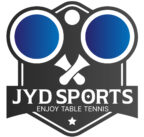
Introduction
In the world of competitive table tennis, 40+ ABS balls have become the standard for training and official play. Built from durable ABS plastic and sized around 40.2 mm, these balls deliver consistent bounce, longer lifespan, and reliable performance across clubs, schools, and tournaments. Whether you’re coaching a youth team or upgrading your club’s equipment, 40+ ABS balls offer a practical blend of performance and value that serious players demand.
What makes 40+ ABS balls special
- Material and durability: Made from ABS plastic, these balls resist cracking and chipping far better than older materials, reducing downtime and replacement costs for busy clubs and schools.
- Size and tolerance: The 40+ designation reflects a slightly larger average diameter (around 40.2 mm) and a broader size tolerance than the classic 40 mm market. This standardization helps ensure more uniform play across different brands.
- Play characteristics: ABS 40+ balls typically provide a slightly slower bounce and reduced spin compared with the old celluloid balls, due to their material and size. The trade-off is a dependable, durable ball with consistent roundness and performance, which many players find ideal for practice and competition alike.
- Consistency and reliability: Reputable 40+ balls are manufactured to tight tolerances, ensuring a predictable bounce, weight, and roundness. This consistency is crucial for coaching, drills, and progression from beginner to advanced levels.
- Official compatibility: ITTF-approved plastic balls use the 40+ standard, aligning training equipment with what players will encounter in modern competitions.
Why athletes and clubs choose 40+ ABS balls
- Durability for frequent use: Training sessions generate thousands of impacts per week; ABS balls resist wear better and last longer than older materials.
- Balanced practice experience: The slightly altered bounce and spin nuances help players develop consistent strokes and adjust to real-match conditions.
- Cost-effectiveness over time: Although upfront costs may be higher than some older balls, fewer replacements and less downtime translate to lower long-term expense.
- Versatility for all levels: From beginners to advanced competitors, 40+ ABS balls support a wide range of drills, from serve-receive to top-spin loops and cardio-focused practice.
What to look for when buying
- Brand reputation: Seek balls from established manufacturers known for quality control and ITTF-approved products.
- Certification: Ensure the ball is labeled ABS and 40+ to guarantee modern construction and compliance with current standards.
- Durability indicators: Look for hard-wearing shells, minimal seam lines (seamless options exist), and a reputation for maintaining roundness after hundreds of hits.
- Training vs. competition versions: Some lines are designed primarily for training (often more durable and cost-effective), while others mirror competition balls in feel and bounce. Decide based on your goals.
- Packaging and quantities: Training programs often buy in packs of 6, 12, or 100. Consider storage, rotation, and replacement schedules in your budget.
How to get the most out of 40+ ABS balls
- Use appropriate balls for the setting: For high-intensity club training, 40+ ABS balls offer durability and consistent bounce, reducing interruptions for repairs or replacements.
- Pair with compatible rubbers and rackets: Match your equipment to the ball’s characteristics; stiffer rubbers can help compensate for the slightly slower bounce of ABS balls.
- Rotate and inspect regularly: Check for cracks, flat spots, or irregular bounce. Replace damaged balls to maintain training quality and prevent bad habits.
- Rotate ball types for variety: Mixing 40+ ABS balls with other training aids can help players adapt to different flight paths and speeds, improving versatility.
Brand highlights worth considering
- ABS 40+ balls from major brands offer reliable performance, durability, and consistent bounce suitable for clubs and ITTF-aligned play.
- Training-focused lines emphasize longevity and roundness, making them ideal for daily practice.
- Competition-ready variants provide a feel closer to match conditions while maintaining the benefits of ABS construction.
Buying guidance by use case
- For clubs and schools: Look for bulk packs, robust construction, and a balance of cost and durability. Ensure ITTF-approved labeling and ABS material.
- For players upgrading from celluloid: Expect a slightly slower pace and less spin at first, but enjoy greater consistency and longer ball life as you adapt your technique.
- For youth and beginners: Choose durable 40+ ABS balls that withstand frequent drops and rough handling, aiding confidence-building drills.
Conclusion
Investing in 40+ ABS table tennis balls is a smart move for any serious player, coach, or club. Their durability, standardized size, and ITTF-aligned performance make them ideal for daily training and competitive play. By selecting trusted brands and planning for longevity, teams can elevate training quality, reduce downtime, and foster skill development across all levels.
If you share your intended use (club training, personal practice, or ITTF competition), the space (gym, school, or club), and your budget, the article can be tailored further with specific product recommendations and a persuasive call-to-action.
